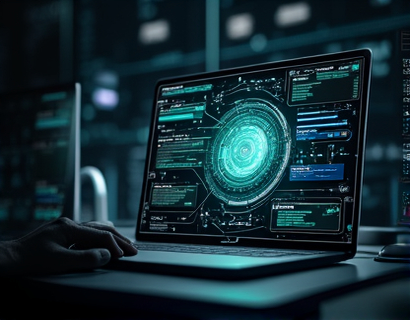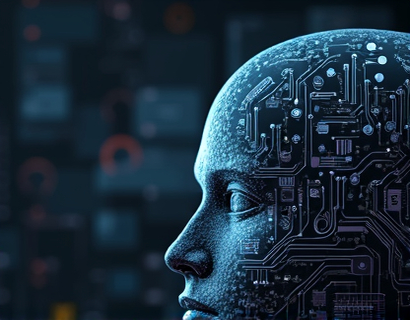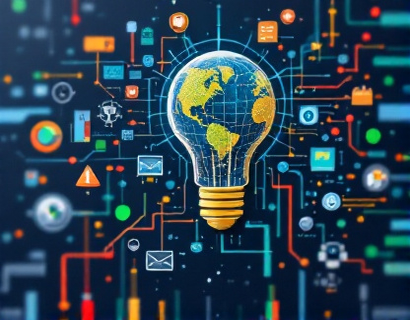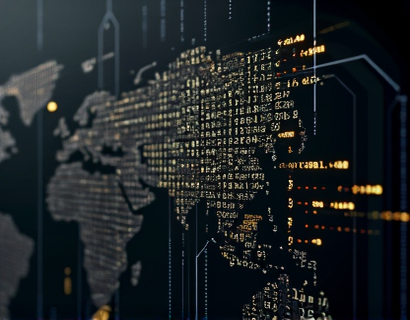AI and Crypto: Transforming Productivity in the Digital Age
The convergence of artificial intelligence (AI) and cryptocurrency is revolutionizing the way we approach productivity and task management in the digital age. This synergy is not just a technological curiosity but a transformative force that is redefining efficiency and work capabilities. As we delve into this topic, it's essential to understand the foundational technologies driving this change and how they are being integrated to create advanced solutions.
AI, with its ability to process vast amounts of data and learn from patterns, has become an indispensable tool in various industries. From healthcare to finance, AI is enhancing decision-making processes and automating routine tasks. Cryptocurrency, on the other hand, has introduced a decentralized and secure method of transaction, challenging traditional financial systems. When these two technologies are combined, the potential for innovation is immense.
Enhancing Task Management with AI
One of the most immediate impacts of AI on productivity is in task management. AI-powered tools can analyze user behavior and preferences to predict and automate tasks. For instance, smart assistants can schedule meetings, manage emails, and even draft documents based on context and previous interactions. These tools learn from user habits, adapting to individual needs over time, which significantly reduces the time spent on mundane tasks.
Project management platforms are also leveraging AI to optimize workflows. By analyzing project data, AI can identify bottlenecks and suggest optimal resource allocation. This not only speeds up project completion but also ensures that team members are utilized efficiently. AI-driven analytics provide insights into team performance, helping managers make data-driven decisions to improve productivity.
Cryptocurrency and Decentralized Applications
Cryptocurrency plays a crucial role in this transformation by providing a decentralized and secure environment for transactions. Decentralized applications (dApps) built on blockchain technology offer new ways to manage and execute tasks without the need for intermediaries. This reduces costs and increases transparency, as all transactions are recorded on a public ledger.
Smart contracts, a key feature of blockchain, automate and enforce contractual obligations without the need for a central authority. In the context of productivity, smart contracts can be used to automate payments, deliverables, and other contractual tasks. This ensures that agreements are executed precisely as agreed upon, reducing the risk of disputes and delays.
Integration of AI and Cryptocurrency
The true power of AI and cryptocurrency is realized when they are integrated. For example, AI can be used to enhance the security and efficiency of blockchain networks. Machine learning algorithms can detect and prevent fraudulent activities, ensuring the integrity of transactions. Additionally, AI can optimize the use of blockchain resources, such as computing power and storage, making dApps more scalable and user-friendly.
Another area of integration is in the realm of digital identities. AI can help manage and verify digital identities on the blockchain, providing a secure and seamless way to authenticate users. This is particularly important for access control and identity verification in various industries, from finance to healthcare.
Maximizing Digital Efficiency
The combination of AI and cryptocurrency is not just about individual tools but about creating an ecosystem that maximizes digital efficiency. This ecosystem can streamline workflows, reduce friction, and enhance collaboration. For instance, AI-driven marketplaces can connect service providers and clients using cryptocurrency, eliminating the need for traditional payment systems and reducing transaction fees.
Furthermore, AI can optimize the use of cryptocurrency in everyday transactions. By analyzing spending patterns, AI can suggest the most cost-effective cryptocurrencies for specific transactions, taking into account factors like network fees and exchange rates. This level of optimization ensures that users get the best value for their digital assets.
Case Studies and Real-World Applications
Several companies are already leveraging the power of AI and cryptocurrency to transform productivity. One notable example is a fintech firm that uses AI to analyze market trends and recommend optimal cryptocurrency investments. This service combines data analytics with blockchain technology to provide users with actionable insights, enhancing their investment decision-making.
Another example is a software development company that has integrated AI-powered chatbots with a cryptocurrency-based payment system. This allows clients to receive support 24/7 and pay for services using cryptocurrency, reducing operational costs and improving customer satisfaction.
Future Prospects
The future of AI and cryptocurrency in productivity is promising. As technology continues to advance, we can expect more sophisticated AI algorithms and more robust blockchain networks. The integration of AI with other emerging technologies, such as the Internet of Things (IoT) and 5G, will further enhance the capabilities of these systems.
One potential development is the creation of AI-driven virtual assistants that can manage multiple aspects of a user's digital life, from scheduling to financial management, all using cryptocurrency for transactions. These assistants will be powered by decentralized networks, ensuring privacy and security.
Challenges and Considerations
Despite the numerous benefits, there are challenges to consider. Regulatory uncertainty remains a significant hurdle for cryptocurrency, affecting its adoption in various industries. Additionally, the complexity of integrating AI and blockchain requires expertise and resources, which can be barriers for smaller organizations.
However, as more companies recognize the value of these technologies, we can expect increased investment in research and development. Educational initiatives and community support will play a crucial role in overcoming these challenges, fostering a more inclusive and innovative ecosystem.
Conclusion
The synergy between AI and cryptocurrency is transforming productivity in profound ways. By automating tasks, enhancing security, and optimizing resources, these technologies are redefining what is possible in the digital age. As the ecosystem continues to evolve, the potential for further innovation is vast, promising a future where digital efficiency is not just an aspiration but a reality.











































